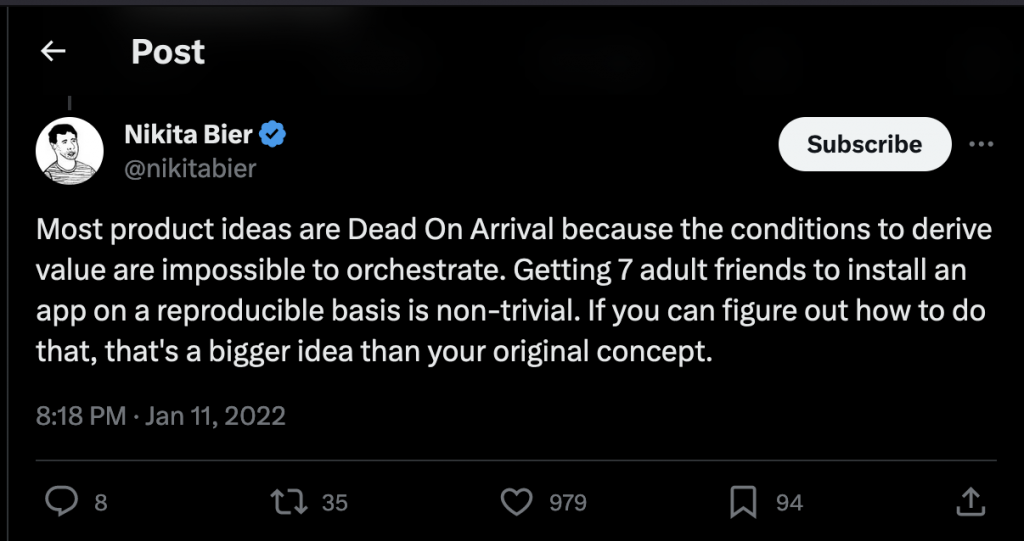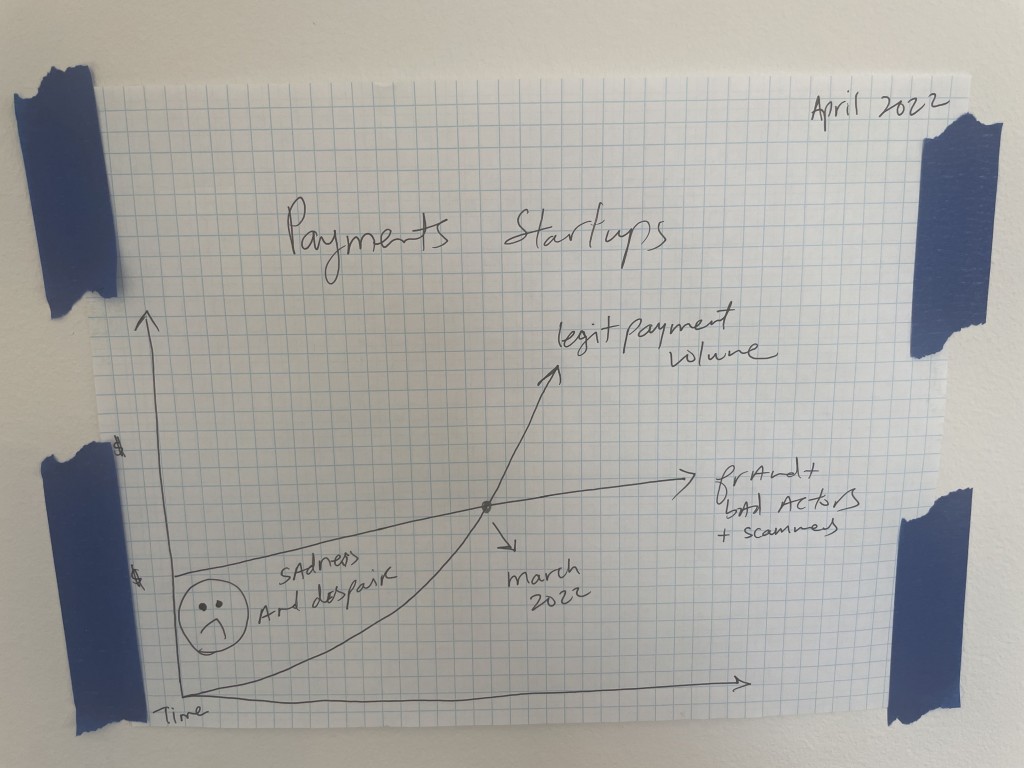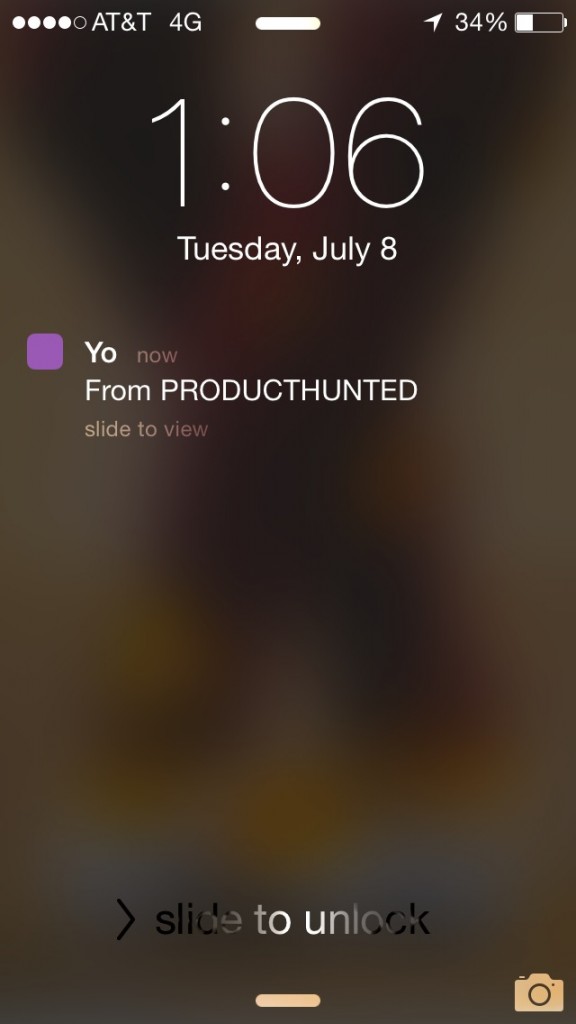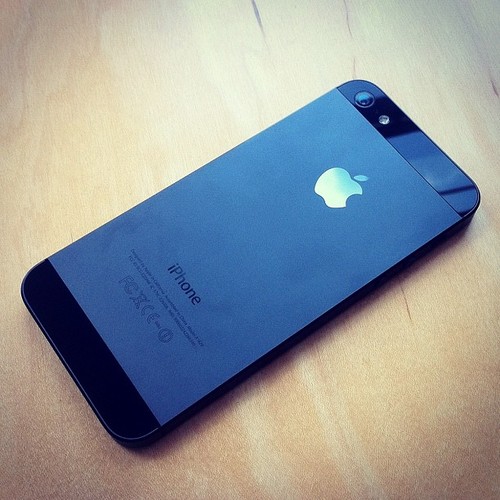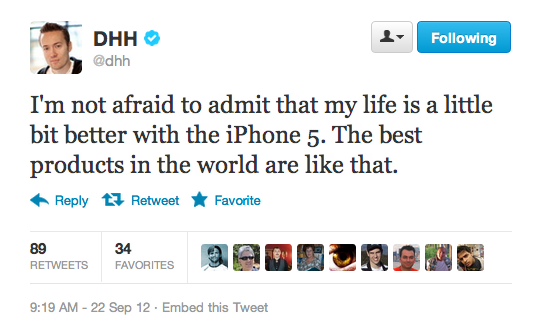October 6th, 2023
Braid Is Dead, Long Live Braid
A dispatch from the wild, vicious world of consumer payments
On the day I chose to start writing this, I went to an afternoon showing of Oldboy at Alamo. There’s a quote that’s repeated at least three times:
Laugh, and the world laughs with you;
Weep, and you weep alone;
I’d been trying to write a pithy summary of my last four years in consumer payments, and here it was, served up on a giant screen. Luck is critical for startups, even in death.
Braid was a consumer payments company that was around from 2019-2023. We designed and shipped a brand-new multi-user financial account called a money pool, and raised ~$10mm in venture capital from investors that I’d looked up to for years. It took us ~2.5 years to find product-market fit, and after that we grew sustainably and quickly. We’d made software that people seemed to want.
A few months later, we were dead.
The thrash happened fast, and left a sea of heartbroken customers, employees, investors, and partners. The thing that broke us wasn’t a stronger blow than any of the others, it was simply the last one we could tolerate. The company shut down in September 2023.
That’s not the end of it, though. We ran an auction for our IP and there was a single bidder: me. You see, fintech is far from over.
Tolstoy was right: successful companies are all alike; every failed company fails in its own way. Failure is a cocktail of loneliness, grief and shame, which is why these stories are not told often. But every failure is also a playbook for the next obvious, effortless success, so it’s critical to share.
I hope our story is helpful.
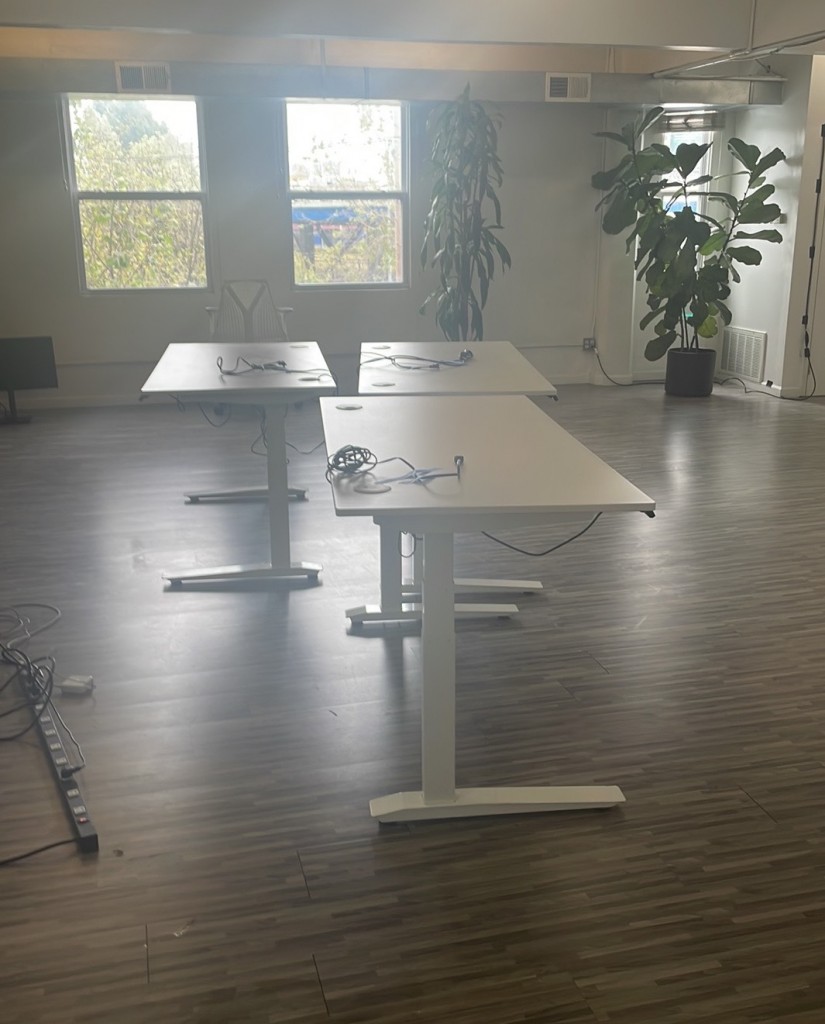 Braid’s empty office on Harrison St. in SF
Braid’s empty office on Harrison St. in SF
What’s Below
I’ve included a timeline of the company’s life, along with one lesson/myth from that time period.
1. Road to Product-Market Fit, 2019, 2020 and most of 2021.
Myth: Your Early Adopters Are Your Best Customers
2. Then, It Worked, Late 2021 to Summer 2022.
Myth: With Great Metrics You Can Always Raise
3. The Ice Bath, Summer 2022.
Myth: Ruthless Dedication to Compliance Will Save You
4. We’re So Done, We’re So Back, We’re So Done, Summer 2022 to Spring 2023.
Myth: The Answer is AWS for Fintech
5. Shutting Down, Summer 2023.
Myth:Failure is a Learning Experience for Everyone
This post is for those who still dare to dream and build in fintech. We do not do this work because it is easy. We do not spend our days trying to make origami out of tissue paper to simply quit and go home. Consumers deserve a financial system that is no less than excellent, and someone needs to do the work to make that happen.
I still blame myself wholly and completely for Braid’s demise, but this post isn’t about me. It’s about what happened.
Road to Product-Market Fit, 2019-2021
Myth: Your Early Adopters Are Your Best Customers
We had an initial concept for the money pool right away, though it had many different names over time. A multi-user bank account was painful to build and difficult to operationalize for a bunch of reasons, which meant we had very few competitors. But for most of these years our metrics were flat. With consumer products it either works or it doesn’t. We iterated constantly for ~2.5 years.
But there’s nothing like a hot market. In early 2019, the neobanks were taking over Europe, and in the U.S. Stripe, Coinbase, Robinhood, and Chime were ripping.
We heard “yes” a lot in those years.
We built the software that we’d wanted to use ourselves, and eventually others started to use it and love it, too. We rode the roller-coaster all the way up, and got high enough to kiss the clouds. But this took a long time.
There are two types of product-market fit for a fintech company: fake PMF and real PMF. Many fintechs, including us, dupe themselves into thinking their PMF is real when it’s not. All the signs are there: enviable early traction, organic growth, and real payment volume. It’s easy to look at the numbers and say, wow, there’s such demand for what we’ve built. We’ve found our cohort of wildly passionate early adopters.
Unfortunately, these people are criminals. They were there to steal our money. They’re early adopters because they’re fraud sharks patrolling coastal waters for fresh meat. And our little payments app? Well, you can guess.
You know who doesn’t move $500 into a brand-new app they’ve never heard of, within 10 minutes of signing up? Real consumers. They need time to learn about the product, build up trust, move $1 or $10 in and out, and make sure everything works.
For the first few months, or few years, fraud can feel all-consuming because it is. I’m thankful that there are many great companies working on this problem (Sardine, Sentilink, Alloy, Unit21, Socure, and more). But in the beginning, it was crushing and time-consuming to handle.
The bright side is there are a lot more real consumers than there are fraudsters. If a product resonates, eventually it all flips. I drew the following graph the day we figured this out, and it’s still up on my wall.
Then, It Worked
October 2021-July 2022
Myth: With Great Metrics You Can Always Raise
When we finally found our groove, our payment volume grew ~5% a week, most weeks, for nearly 22 straight weeks in H1 2022. We went from processing less than $10K a day to having multiple $100K+ days, in the span of around five months. We were on track to pass $10mm in monthly volume by Q4 2022. We’d figured out who our customer was, why people wanted what we’d built, and how to find more of them for very little money.
We’d get asked a lot about use-cases – who was using it, and for what?
The most concise explanation of the multi-user opportunity was this: there are financial accounts for 1 and 2 consumers, and there are financial accounts for businesses. But there is no financial account for n consumers. Joint accounts are insufficient, outdated, often (but not always) capped at two, and not a product priority for most banks. A money pool could serve a customer base for which there was no existing product, only clunky workarounds.
There were myriad buckets of n users who loved having a financial account designed just for them. A few examples from our own data: coparents, houses, art collectives, extended families who get along, teams, people who share livestock, churches, punk bands, weekend hustles, extended families who don’t get along, wiccans, and our team’s personal favorite, firehouses.
The use-cases that didn’t work well for us were short-duration social events: group travel, bachelor parties, etc. The “split payments with friends” meme, we found, was a red herring and a fallacy. Opening a standalone financial account for a one-off event makes no sense. These use-cases had massive churn, low relative volume and created little sustainable long-term value. Use Venmo!
Instead of the usual hockey stick graph, here’s a video of a fireman from Alabama talking about how they used Braid:
I called one of our investors in early October 2021 to report that we’d figured it out, that it was going to work. He said, “great, raise money immediately, the time is now.” This advice was excellent, prescient, and correct.
I fought him. I said, “if our numbers are great and consistent, we can always raise, let’s wait it out a few more months.” I believed this, too. But this was the moment I got greedy. I’d like to blame it on anything else – companies raising huge rounds off zero traction, ZIRP, whatever. I’d been building software since I was in my early 20s, and felt that, finally, the rest of the world now understood the magic of software business models. Of course these multiples are warranted, I thought to myself – this growth has no ceiling, the TAM is “unlimited” and this is our new reality. The revenge of the nerds is happening in real-time, and gosh, it fucking rules.
But if I really take a hard look at that moment, it was about me, and my ego. We’d processed eight-figures of payments at that point, and over the next few months, we grew consistently and fast. But venture capital is not for companies that are good, or even companies that are great. It’s for companies that are so excellent that they produce outsized returns at the right time, in the right market. We timed this completely wrong and it hurt us.
Every dollar a startup can raise is a gift. For a time I lost sight of this, and I won’t make that mistake again.
The Ice Bath
July 2022
Myth: Ruthless Dedication to Compliance Will Save You
We’d finally found a delicate equilibrium balancing the many mouths we had to feed: consumers, banks, networks, regulators, employees, investors, vendors and fraudsters.
But that balance got ripped apart fast. Our sponsor bank’s behavior changed suddenly. They stopped replying to emails and became noticeably cagey on phone calls. When they did reply, it was usually with an urgent demand for something they hadn’t asked us about in years. We’ve never heard the full story, but this bank isn’t in the fintech sponsorship business anymore, with us or with anyone. Eventually, we had to move to a new bank. We had to offboard and cash-out all our customers in the summer of 2022.
It felt like a bucket of ice got dumped over our heads. Here is a highly realistic AI-generated image of me in that moment:
In fintech, it’s easy to pit the technologists and the regulators against one another: fuck around on one side, find out on the other. But we knew better than that. Our product was not in any sort of legal gray area (e.g. crypto) and fit within the bounds of existing law. From the day we started until the day we shut down, we’d spend millions of dollars to build a best-in-class compliance program to sit alongside our offering. For every hour that we spent on engineering for a consumer-facing feature, we spent another hour on compliance, and a third hour on fraud. That meant everything took 3X as long, but there wasn’t another way.
What we didn’t understand at any level of depth, is that even the most robust compliance program would only get us so far. We were taking on indirect risk from every fintech in the bank’s portfolio, as well as the bank’s relationship with its regulators, which is highly protected and confidential. Fintechs sit adjacent to regulators, not directly under them, so mission-critical information affecting multi-million-dollar companies is often delivered via backchannel whispers and a messy game of telephone.
Yet, one observation about sponsor banks is how much they care about supporting new products. The community-oriented mindset is pervasive among bankers. Many see their bank as a place to help their community members live the lives they want. I continue to go back to this quote from a Credit Union executive from February 2018:
People don’t want a mortgage, they want a house…They don’t want an auto loan, they want a car to get to work. They don’t want a savings account, they want a way to buy the things they want.
This is encouraging, but banks do not answer to their fintech customers, they answer to their regulators. If the regulators come down on the bank, as the fintech there’s nothing you can do about it. A regulatory rug pull can and will outstrip any early traction or compliance gold stars that you think might save you.
Put another way, as a startup we were a tiny rivulet downstream of the ocean that is the U.S. financial system. When the dam broke, we learned very quickly that no one cared about our perfect, squeaky clean BSA audit.
We’re So Done, We’re So Back, We’re So Done
July 2022 – April 2023
Myth: The Answer is AWS for Fintech
The company was effectively in a coma from July 2022 to January 2023. It was bleak – we were a payments company processing $0 in payment volume. Eventually, we found a new bank that wanted to work with us, and we were eager to get the product back online. We worked for ~six months on the migration, and Braid came roaring back to life in January 2023.
We started from zero and processed over $1mm in the first ~30 days of our relaunch. It felt like we’d get back to where we left off quickly, as if no time had passed. In the spring of 2023, we signed a term sheet for a new round of funding. It looked like we might make it through, after all.
The euphoria didn’t last.
Six weeks after our relaunch, SVB imploded, and right after, Hindenburg Research’s Cash App report dropped. The market kept getting worse. Rates kept going up.
The nail in the coffin came soon after. A critical third-party informed us that they’d changed their mind on a key technical decision. All the players in our ecosystem had not fit together perfectly post-migration, and we’d been dealing with a long list of technical problems.This change was going to break all our software. We had two decisions: rebuild over from zero or shut it all down. It didn’t feel right to take additional capital knowing that we’d have to rebuild, again, so we called off the round.
This should be a separate post, but I wanted to note how much my feelings about fintech software changed over my four-plus years at Braid. Initially, we thought leveraging third-party software would help us move faster and focus on our core offering.
What we found, instead, was every additional partner had the potential to break big, important parts of our stack. Building a multiplayer offering meant we had to be as close to the metal as possible, because a lot of our UX didn’t really exist off-the-shelf. After several painful migrations, our distaste for contractual and technical lock-in grew dramatically. By the end, if there was something we could build ourselves in Retool, we did.
In addition, building mostly in-house was the only way our unit economics worked. There’s a lot of great fintech software out there, but if that software eats your entire margin, you’ll end up dead regardless.
Once we decided it was over, I spent the morning sitting in my Herman Miller chair that would soon be sold, zooming from one end of the office to the other. Could I put it off, just one more hour? The dread and loneliness in that moment is hard to overstate – sending out a final email to customers, laying people off, selling everything, telling the investors.
I’ve been lucky to have started four software companies. Every time they end, whether it’s “a good outcome” or “a bad outcome”, it’s universally devastating.
Finally, we told everyone it was over, and cashed-out our customers for the second time.
Shutting Down, IP Sale
June-September 2023
Myth: Failure is a Learning Experience for Everyone
The team was gone by June, and I spent the summer winding everything down. The first note I wrote down after we shut down was: when you win, you win together, and when you fail you fail alone. Our failure felt like a lesson, a “case study”, for everyone but me. For me, it was a punch in the gut. In my experience, the best quote on failure is from Parker Conrad:
‘Failure is really, really, really awful,’ he told me. ‘People describe it as, ‘Oh, you learn so much from failure.’ I don’t think that’s true. I think the only thing I learned was how much failure sucks and how soul destroying it is.’
It was important to write up these lessons for everyone else. But for me, the biggest takeaway was that I never, ever wanted to fail again.
Braid shut down almost exactly three years after we wrote the Multiplayer Fintech essay. To this day I still believe everything written there – the soul of the product didn’t change much over all the years we worked on it. We swapped features, changed banks, processed thousands, then millions, then tens of millions of dollars.
We ran an auction for the IP, and in the end, there was only one bid: from me. This happens more often than people realize. Payments software has enormous overhead (compliance, fraud, regulatory, etc.) so the software on its own has little inherent value. All our major investors approved the sale, and I’m extremely thankful and grateful they did. Braid’s second act is currently a Substack email list (sign up!), a Github repo and a blinking cursor in a brand-new Google Doc.
Will it be different next time? Yes. Absolutely. So much has changed about the product, market conditions, and business model over the years. Every startup is an amalgamation of thousands of data points that are changing in real-time, and no two are the exact same. The through line is making something people want. This is the most sacred thing of all, and one thing that will never be a myth.
Braid’s second act will be just as tumultuous, I’m sure. Consumer financial needs change faster than our financial system can evolve to meet them. This is a fact. There’s an enormous opportunity here to build excellent software that solves a tangible problem, and that’s what makes it worth it to keep going.
And, I hate to lose.
Special Thanks
I want to thank all our customers for taking a chance on us, even the ones who churned, Braid team members past and present who worked hard and shipped, even when our numbers were flat, and every investor who wrote us a check of any amount, even when the market was ice cold.
Finally, thank you to Rajiv Ayyangar for your thoughtful essay about Tandem, which provided the inspiration for this post.
Solitude
By Ella Wheeler Wilcox
Laugh, and the world laughs with you;
Weep, and you weep alone;
For the sad old earth must borrow its mirth,
But has trouble enough of its own.
Sing, and the hills will answer;
Sigh, it is lost on the air;
The echoes bound to a joyful sound,
But shrink from voicing care.
Rejoice, and men will seek you;
Grieve, and they turn and go;
They want full measure of all your pleasure,
But they do not need your woe.
Be glad, and your friends are many;
Be sad, and you lose them all,—
There are none to decline your nectared wine,
But alone you must drink life’s gall.
Feast, and your halls are crowded;
Fast, and the world goes by.
Succeed and give, and it helps you live,
But no man can help you die.
There is room in the halls of pleasure
For a large and lordly train,
But one by one we must all file on
Through the narrow aisles of pain.
